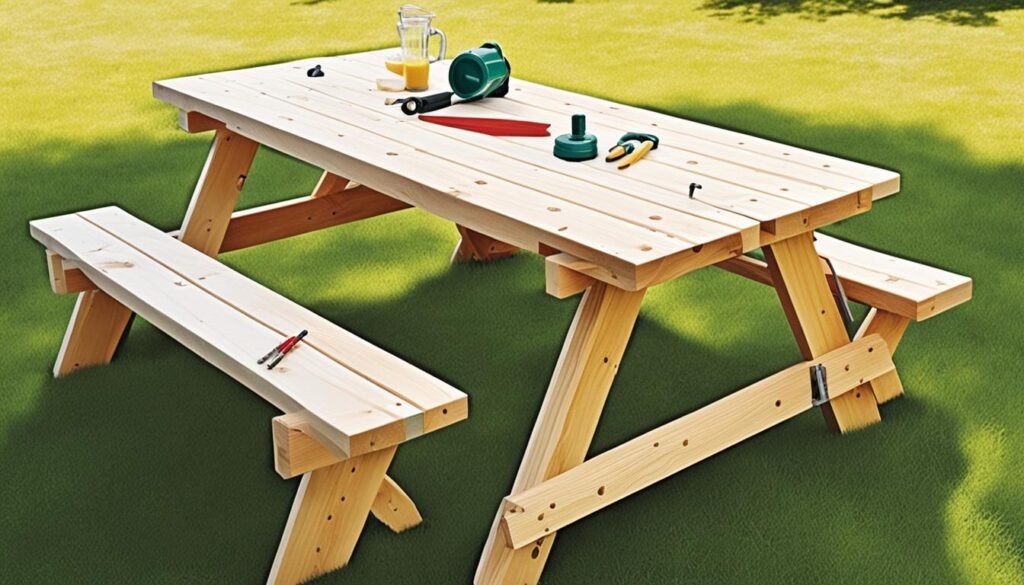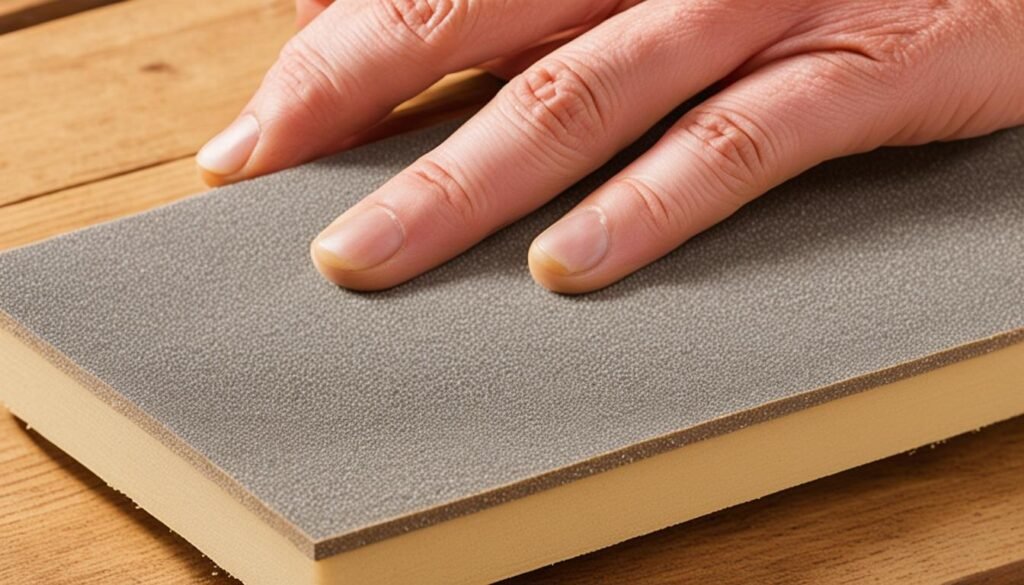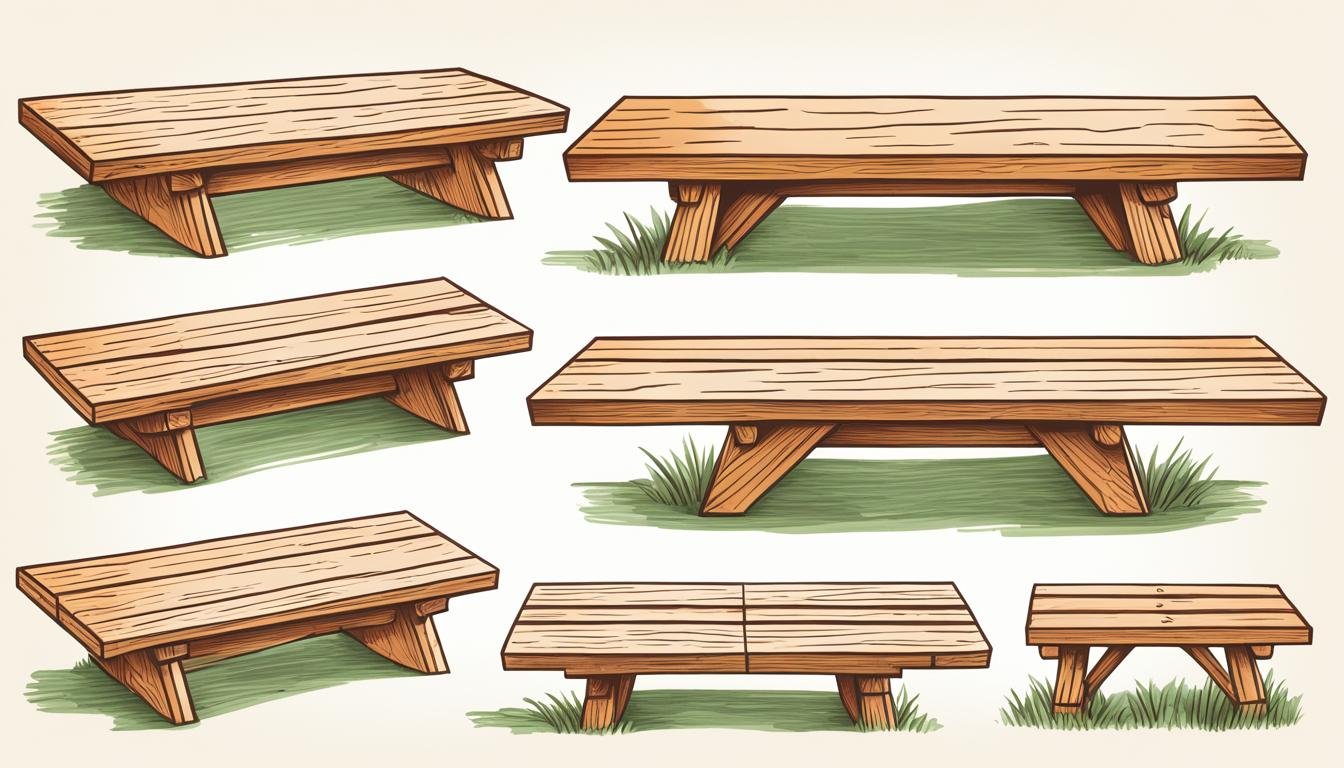The sun setting low casts a warm glow in your backyard, setting the stage for laughter and conversation. It’s not just about making outdoor furniture; it’s about creating a place where memories will form for years. This step-by-step guide isn’t just a woodworking project. It’s about building the backdrop for endless summer nights and pleasant afternoons.
Whether you’re new to woodworking or have some experience, this article is your go-to for DIY picnic table plans. It offers tips for building a durable picnic table and a clear guide on how to make it. So, let’s roll up our sleeves. We’ll make your outdoor dining area dream come true, one plank and screw at a time.
Key Takeaways
- Understand why creating a picnic table can be both a rewarding hobby and a way to enrich your outdoor living space.
- Discover essential woodworking skills for beginners that can be applied to various outdoor furniture projects.
- Learn about the necessary materials and tools to start your journey in DIY making a picnic table.
- Receive a thorough step-by-step picnic table guide to assist you in crafting a robust and beautiful picnic table.
- Gain insightful DIY picnic table plans and construction tips for a successful and enjoyable building experience.
Preparation: Selecting the Right Materials and Tools
Getting ready to make your picnic table takes some upfront work. You’ll want the correct materials ready to go. This makes the building process smoother and ensures your table turns out great.
Gathering Your Materials
You’ll begin by picking out all necessary materials. You need the right lumber, screws, and additional pieces for your table. Using top-quality materials means your table will last longer and be easier to put together.
Choosing the Right Wood for Durability
There are many wood types to choose from for your picnic table. Redwood and Cedar stand out for their ability to resist rot and decay. If you choose pressure-treated lumber, make sure it’s safe for food and people. This is important for tables used for eating.
Essential Tools for DIY Picnic Table Projects
Having the correct tools is as crucial as the right materials. For this project, you’ll need a saw, a drill, and safety gear. You might also need a hammer, sandpaper, and a measuring tape.
It’s important to have a complete list of what you need. Here is a list to help you get ready:
| Materials | Quantity | Tools |
|---|---|---|
| Lumber (2x4s, 2x6s, 2x8s) | Varies based on design | Circular saw or handsaw |
| Galvanized screws (3 to 4 inches) | 1 lb | Power drill |
| Galvanized nails | 1 lb | Hammer |
| Wood sealant or stain | Depending on table size | Paintbrush |
| Carriage bolts, washers, and nuts | Varies based on design | Wrench |
Being precise is key; always measure carefully. As you gather your tools and materials, think through each step. This helps you prepare to build your picnic table successfully.
DIY Making a Picnic Table: The Foundation
Building a strong foundation for a picnic table is key. It’s important to build the base with care. This makes sure your table is stable and lasts long. Follow key steps to make a great foundation for all your outdoor events.

Start by choosing strong, treated wood for outdoor use. This protects the wood from weather damage. Make sure all the legs are cut to the same height for a flat surface. Also, cut cross supports correctly so they fit well between the legs for more stability.
Then, put together the legs and cross supports to make two side frames. For this step, use galvanized screws or bolts. These materials resist rust. Next, link the side frames with long supports. This stops the table from shaking.
To make the table even stronger, add diagonal braces. Place these between the legs and across supports. This keeps the table steady and makes it stronger.
| Component | Length | Quantity | Material |
|---|---|---|---|
| Table Legs | 32 inches | 4 | Pressure-Treated Lumber |
| Cross Supports | 28 inches | 4 | Pressure-Treated Lumber |
| Longitudinal Supports | 60 inches | 2 | Pressure-Treated Lumber |
| Diagonal Braces | 30 inches | 4 | Pressure-Treated Lumber |
Finally, check that all joints are tight. You may need to tighten them again after some use. Now, you’ve built a solid base. Your picnic table is ready for a top and benches, getting you closer to enjoying meals outdoors.
Constructing Your Picnic Table: Step-by-Step Assembly
Now that the base of your picnic table is ready, let’s tackle the fun part: assembling a picnic table. This phase sees your table taking shape as you add the tabletop, legs, and bench supports. Each step strengthens the table for many outdoor events.
Starting with the Tabletop
First, attach the tabletop. Place the boards flat and ensure they align well, leaving no gaps. The table is where family and friends will gather, so make it perfect.
Attaching the Legs Securely
The legs are the pillars of your picnic table. They support everything on it. When attaching them, use durable hardware. This makes your table last longer.
Adding Bench Supports for Stability
A picnic table needs stable benches. Adding bench supports stops them from wobbling. It lets everyone sit back and relax without worry. Place supports evenly for a sturdy build.
Reinforcing Structure with Angle Braces
For a strong picnic table, reinforcing its structure is key. Angle braces add stability. They keep the table firm and prevent it from tipping.
| Step | Component | Hardware | Tools Needed |
|---|---|---|---|
| 1 | Tabletop Boards | Screws (3 1/2 inch) | Drill |
| 2 | Legs | Carriage Bolts (1/2 inch) | Wrench, Drill |
| 3 | Bench Supports | Screws (2 1/2 inch) | Screwdriver, Saw |
| 4 | Angle Braces | Brackets, Screws (1 1/2 inch) | Screwdriver |
Follow these steps to build a strong and welcoming picnic table for your yard. Being careful and precise pays off. You’ll get a table that’s both useful and a source of pride for years.
Customizing Your Picnic Table: Finishing Touches
After you’ve built your picnic table, adding the finishing touches can really make it pop. These techniques make sure your picnic table is both strong and eye-catching.
Smoothing the Surface: Sanding Techniques
Proper sanding is key to preparing your table for treatment. Start with coarse-grit sandpaper to smooth out splinters and rough spots. Then, use finer grits for a sleek surface. It’s important to sand in the direction of the wood grain to avoid marks. Finish with a very fine grit sandpaper for the best smoothness.

Staining and Weatherproofing Tips
Staining makes your picnic table look better and protects it. Make sure the wood is clean and dry before you start. If you’re working with a wood that gets blotchy, use a wood conditioner first. Pick a stain color that looks good in your yard, and apply it with care, wiping away any extra. Seal it with a clear protector to keep it safe from the sun and rain. This is crucial for a long-lasting picnic table.
Optional Style Additions for Your Picnic Table
- Inset Tiles: Add outdoor tiles to your table top for color and easy cleaning.
- Carved Patterns: Carve your own design or family name for a personal touch.
- Bench Cushions: Boost comfort and style with cushions that can handle the weather.
- Paint: Paint your table for a bold look. Make sure to use outdoor paint.
Adding these stylish touches lets you show off your creativity. Your picnic table will be the star of your garden parties and family get-togethers.
| Finishing Element | Benefits | Considerations |
|---|---|---|
| Sanding | Smooth finish, prepares for staining | Choose the right grit sequence |
| Staining | Aesthetic appeal, wood protection | Select appropriate stain for wood type |
| Weatherproofing | Extends table life, prevents decay | Apply topcoat sealant after stain dries |
| Style Additions | Personalization, enhanced comfort | Choose weather-resistant materials |
With these tips on sanding, staining, and customization, your picnic table will be more than just useful. It’ll show your unique flair. These final touches are what make your DIY project special and truly yours.
Conclusion
Starting a DIY project like building a picnic table can seem tough. Yet, it’s something you can surely do. This guide has all you need to turn wood and screws into a beautiful spot for meals and fun outdoors. It’s a chance to show off your creative skills and make something sturdy and stylish for your yard.
Think about how great you’ll feel using the table you made. It could be for a big family meal, a fun barbecue, or just relaxing. Your picnic table will be a sign of your hard work. It’s not just about putting things together. It’s about making fond memories and adding your special touch to your garden.
With our guide, the right materials, your tools, and some effort, you’re set to start this rewarding project. Dive into this fun DIY adventure. Enjoy the pride of making something both pretty and useful. This project is more than just a task. It’s an adventure that’ll make every outdoor moment better.
FAQ
What materials do I need to build a picnic table?
What type of wood should I choose for my picnic table?
What tools do I need for building a picnic table?
How do I construct the foundation of a picnic table?
What is the process for assembling a picnic table?
How do I customize and finish my picnic table?
Source Links
- https://www.homedepot.com/c/ah/how-to-build-a-picnic-table/9ba683603be9fa5395fab902da03929
- https://wilkerdos.com/how-to-build-a-round-picnic-table-with-benches/
- https://www.wikihow.com/Build-a-Picnic-Table

Servicing various areas in Utah, Wasatch Summit and Salt Lake County, including but not limited to Eagle Mountain, Provo, Spanish Fork, Saratoga Springs, Lehi, Salem, Payson, Elk Ridge, and more, we cater to homeowners with newly built homes featuring unfinished basements. Our team of skilled professionals understands the intricacies of basement framing and uses state-of-the-art techniques and tools to exceed our clients’ expectations. (801) 687-8722


